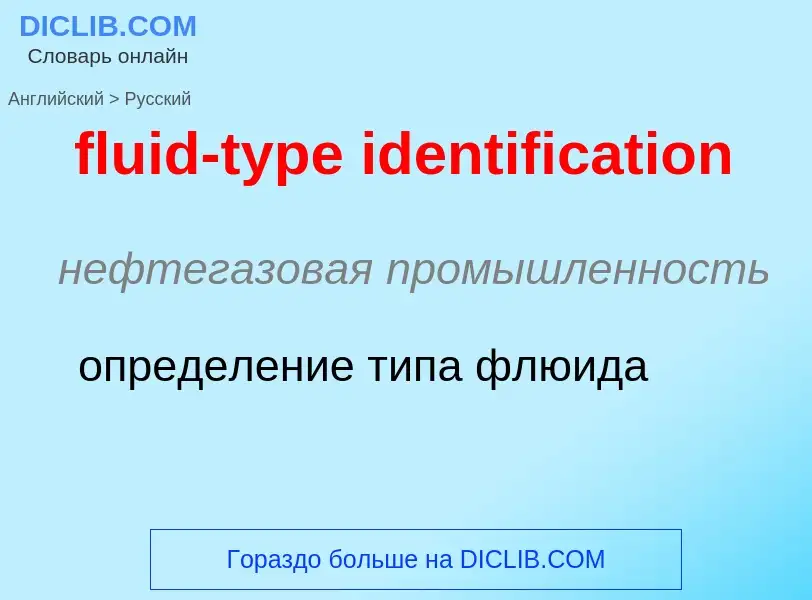Vertaling en analyse van woorden door kunstmatige intelligentie ChatGPT
Op deze pagina kunt u een gedetailleerde analyse krijgen van een woord of zin, geproduceerd met behulp van de beste kunstmatige intelligentietechnologie tot nu toe:
- hoe het woord wordt gebruikt
- gebruiksfrequentie
- het wordt vaker gebruikt in mondelinge of schriftelijke toespraken
- opties voor woordvertaling
- Gebruiksvoorbeelden (meerdere zinnen met vertaling)
- etymologie
fluid-type identification - vertaling naar russisch
нефтегазовая промышленность
определение типа флюида
общая лексика
лектотип
общая лексика
клонотип
Definitie
Wikipedia

Ferrofluid is a liquid that is attracted to the poles of a magnet. It is a colloidal liquid made of nanoscale ferromagnetic or ferrimagnetic particles suspended in a carrier fluid (usually an organic solvent or water). Each magnetic particle is thoroughly coated with a surfactant to inhibit clumping. Large ferromagnetic particles can be ripped out of the homogeneous colloidal mixture, forming a separate clump of magnetic dust when exposed to strong magnetic fields. The magnetic attraction of tiny nanoparticles is weak enough that the surfactant's Van der Waals force is sufficient to prevent magnetic clumping or agglomeration. Ferrofluids usually do not retain magnetization in the absence of an externally applied field and thus are often classified as "superparamagnets" rather than ferromagnets.
In contrast to ferrofluids, magnetorheological fluids (MR fluids) are magnetic fluids with larger particles. That is, a ferrofluid contains primarily nanoparticles, while an MR fluid contains primarily micrometre-scale particles. The particles in a ferrofluid are suspended by Brownian motion and generally will not settle under normal conditions, while particles in an MR fluid are too heavy to be suspended by Brownian motion. Particles in an MR fluid will therefore settle over time because of the inherent density difference between the particles and their carrier fluid. As a result, ferrofluids and MR fluids have very different applications.
A process for making a ferrofluid was invented in 1963 by NASA's Steve Papell to create liquid rocket fuel that could be drawn toward a fuel pump in a weightless environment by applying a magnetic field. The name ferrofluid was introduced, the process improved, more highly magnetic liquids synthesized, additional carrier liquids discovered, and the physical chemistry elucidated by R. E. Rosensweig and colleagues. In addition Rosensweig evolved a new branch of fluid mechanics termed ferrohydrodynamics which sparked further theoretical research on intriguing physical phenomena in ferrofluids. In 2019, researchers at the University of Massachusetts and Beijing University of Chemical Technology succeeded in creating a permanently magnetic ferrofluid which retains its magnetism when the external magnetic field is removed. The researchers also found that the droplet's magnetic properties were preserved even if the shape was physically changed or it was divided.


![[[Macrophotograph]] of ferrofluid influenced by a magnet. [[Macrophotograph]] of ferrofluid influenced by a magnet.](https://commons.wikimedia.org/wiki/Special:FilePath/Ferrofluid close.jpg?width=200)
![A ferrofluid in a [[magnetic field]] showing normal-field instability caused by a [[neodymium magnet]] beneath the dish A ferrofluid in a [[magnetic field]] showing normal-field instability caused by a [[neodymium magnet]] beneath the dish](https://commons.wikimedia.org/wiki/Special:FilePath/Ferrofluid in magnetic field.jpg?width=200)

.jpg?width=200)
.jpg?width=200)
![Linnaeus]], is the type species for the genus ''[[Bufo]]'' Linnaeus]], is the type species for the genus ''[[Bufo]]''](https://commons.wikimedia.org/wiki/Special:FilePath/Bufo bufo (Marek Szczepanek).jpg?width=200)
![dorsal]] and 2) ventral aspect of holotype,<br>3) dorsal and 4) ventral aspect of paratype dorsal]] and 2) ventral aspect of holotype,<br>3) dorsal and 4) ventral aspect of paratype](https://commons.wikimedia.org/wiki/Special:FilePath/JamidesEliotiMUpUnAC1.jpg?width=200)
![Type illustration of ''[[Mormopterus acetabulosus]]'' Type illustration of ''[[Mormopterus acetabulosus]]''](https://commons.wikimedia.org/wiki/Special:FilePath/Mormopterus acetabulosus type illustration.jpg?width=200)
